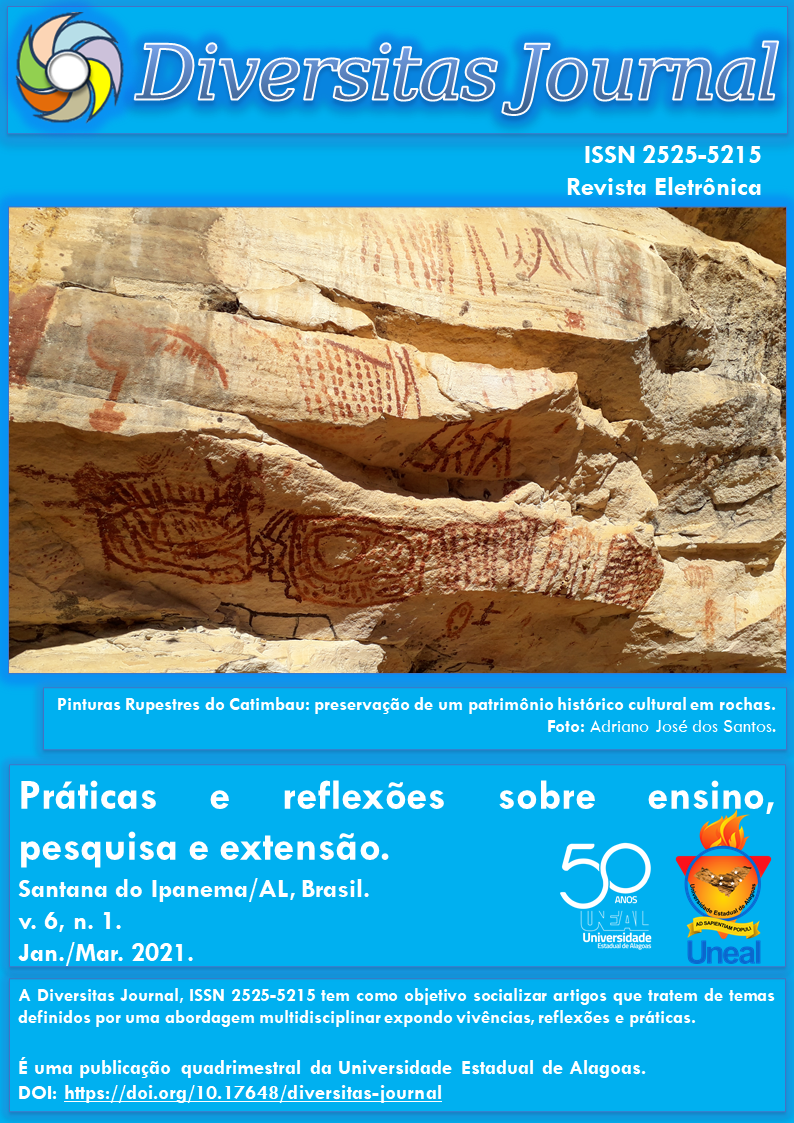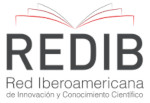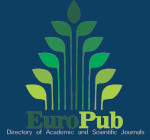Florística e fenologia de dez espécies do extrato arbustivo-arbóreo em torno do Apiário-Escola da Universidade Estadual de Alagoas (UNEAL)
DOI:
https://doi.org/10.17648/diversitas-journal-v6i1-1701Abstract
ABSTRACT: The predominant phenological patterns for the Caatinga are marked by the rapid replacement of the crowns during the beginning of the rainy season and by the deciduous habit at the beginning of the dry period. The flowering and fruiting process is directly related to the rainy season and mainly in an environment with many variations such as the Caatinga. The present work aimed to characterize the flora of the area where the apiary / school is located, as well as the phenology of ten species representative of the arboreal extract occurring in the Caatinga area in the semi-arid region of Alagoas. The study was conducted at the experimental station Curral do Meio (Sementeira), located in the municipality of Santana do Ipanema, mesoregion of the Sertão region of Alagoas. The observations were made monthly from April 2019 to January 2020, where flowering data (flower buds and anthesis flowers), fruiting (developing fruits and ripe fruits ready for dispersion), sprouting (emergence of new leaves) and leaf fall. In the 50 plots sampled in the experimental area, 1,626 individuals were found, which are distributed in 18 families, 36 genera, 40 species and two indeterminate individuals. During the present study and according to the data obtained, it can be seen that, for the ten species, the production of new leaves occurred during the rainy season and the beginning of the dry season, which indicates that the sprouting phase is directly related with precipitation. However, when foliar senescence is observed, it can be analyzed that some species concentrated the fall of the leaves in the dry period and the beginning of the rainy season, such as Catingueira, Baraúna and Umburana de Cheiro, while in Pereiro this phenophases were practically registered over almost the entire period, which indicates that the species is gradually replacing the leaves.
KEYWORDS: beekeeping, native flora, Caatinga, sustainable activity.
Metrics
References
ALBUQUEQUE, A. L. S. Atributos químico-bromatológica de espécies da Caatinga com Potencial Forrageiro, Fauna Edáfica e Cinética de CO2.2013. 120f. Tese (Doutorado em Zootecnia) –Universidade Federal da Paraíba –Centro de Ciências Agrárias, Areia.
AMORIM, I. L.; SAMPAIO, E. V. S. B.; ARAUJO, E. L. Fenologia de espécies lenhosas da caatinga do Seridó, RN. Revista Árvore, v. 33, p. 491-499, 2009.
ANDRADE-LIMA, D. The caatinga dominium. Rev. Bras. de Bot, n. 4, p. 149-153, 1981.
ANDRADE, M. V. M.; ANDRADE, A. P.; SILVA, D. S.; BRUNO, R. L. A.; GUEDES, D. S. Levantamento florístico e estrutura fitossociológica do estrato herbáceo e subarbustivo em áreas de caatinga no Cariri paraibano. Caatinga (Mossoró, Brasil), v. 22, n. 1, p. 229-237, janeiro/março de 2009.
ARAUJO, E. L.; FERRAZ, E. M. N. Processos ecológicos mantenedores da diversidade vegetal na caatinga: estado atual do conhecimento. In: SALES, V. C. (Org.). Ecossistemas brasileiros: manejo e conservação. Fortaleza: Expressão Gráfica e Editora, p. 115-128, 2003.
ARAÚJO, E. L. Estresses abióticos e bióticos como forcas modeladoras da dinâmica de populações vegetais da caatinga. In: NOGUEIRA, R. J. M.; ARAUJO, E. L.;WILLADINO, L. G.; CAVALCANTE, U. M. T. (Ed.). Estresses ambientais: danos ebenefícios em plantas. Recife: MXM Gráfica e Editora, p. 50-64, 2005.
ARAÚJO, K. D.; PARENTE, H. N.; SILVA, É. É.;RAMALHO, C. I.; DANTAS, R. T.; ANDRADE, A.P.; SILVA, D. S. Levantamento florístico do estrato arbustivo-arbóreo em áreas contíguas de Caatinga no Cariri Paraibano. Revista Caatinga, v. 23, n. 1, p. 63-70. 2010.
BARBOSA, D. C. A.; ALVES, J. L. H.; PRAZERES, S. M. & PAIVA, A. M. A. Dados fenológicos de 10 espécies arbóreas de uma área de caatinga (Alagoinha –PE).Acta Botânica Brasílica 3: 109-117, 1989.
BARBOSA, D. C. A.; BARBOSA, M. C. A.; LIMA, L. C. M.Fenologia de espécies lenhosas da caatinga. Pp. 657-693. In: LEAL, I.R.; TABARELLI, M.; SILVA, J.M. C. (eds.). Ecologia e Conservação da Caatinga. Recife, UFPE, 2003.
BARBOSA, A. S. Estrutura da vegetação e distribuição espacial de cactaceae em áreas de caatinga no semiárido paraibano. 2011. 166f. Dissertação (Mestrado em Agronomia) –Universidade Federal da Paraíba –Centro de Ciências Agrárias, Areia.
BARTH, O. M. A utilização do pólen na interpretação da flora apícola. 2012. Disponívelem:<http://www.brasileirosnaalemanha.com/portal/index.php?option=com_content&view=article&id=641:autilizacaodo-polen-na-interpretacao-dafloraapicola&catid=118:cienciaetecnologia&Itemid=218>Acessado em: abril de 2015.
BORGES, MARIA DA GLORIA BORBA. Estudo sobre a sustentabilidade: aspectos socioeconômicos e ambientais em cinco associações de apicultoresno Sertão da Paraíba/ Maria da Gloria Borba Borges –Pombal, 2015. 62 fls.
BRASIL –Ministério do Meio Ambiente: Bioma Caatinga. 2015. Disponível em: http://www.mma.gov.br/biomas/caatinga. Acesso em: 23 / 11 / 2018.
CARVALHO, C. A. L.; SOUZA, B. A.; SODRÉ, G. S.; MARCHINI, L. C.; ALVES, R. M. O. Mel de abelhas sem ferrão: contribuição para a caracterização físico-química. Cruz das Almas: Universidade Federal da Bahia/SEAGRI-BA, 2005. 32p.
D’APOLITO, C.; PESSOA, S.M.; BALESTIERI, F.C.L.M.; BALESTIERI, J.B.P. Pollen harvested by Apis mellifera L. (Hymenoptera: Apidae) in the Dourados region, Mato Grosso do Sul state (Brazil). Acta Botânica Brasilica, v.24, n.4, p.898-904, 2010.
EMBRAPA Empresa Brasileira de Pesquisa Agropecuária. Fonte: https://www.embrapa.br/meio-norte/flora-apicola. Acesso em: 03.10.2018.
ENGLER, W. A. Contribuição ao estudo da Caatinga pernambucana. Rev. Bras. de Geo. v.13, p. 577-590, 1951.
EVANGELISTA-RODRIGUES, A.; SILVA, E. M. S.; BESERRA, E. M. F.; RODRIGUES, M. L. Análise físico-químico dos méis das abelhas Apis mellifera e Melipona scutellarisproduzidos em regiões distintas no Estado da Paraíba. Ciência Rural, v35, n.5, p.1166-1171,2005.
GIULLIETTI, A. M.; HARLEY, R. M.; QUEIROZ, L. P.; BARBOSA, M. R. V.; BOCAGE NETA, A. L. de. Espécies endêmicas da caatinga: Vegetação e flora da caatinga. Workshop Avaliação e identificação de ações prioritárias para a conservação, utilizaçãosustentável e repartição de benefícios da biodiversidade bioma Caatinga. Petrolina,Pernambuco, Brasil, p. 103-118, 2002.
IBGE. Instituto Brasileiro de Geografia e Estatística, 2012. Produção da pecuária municipal. Rio de Janeiro, v.40, p.1-71.
IBGE –Instituto Brasileiro de Geografia e Estatística Gado Bravo: Dados Gerais do Município.Disponível em: https://cidades.ibge.gov.br. Acessado em: 23 / 11 / 2018.
JANZEN, D.H. 1967. Syncronization of sexual reproduction of trees within the dry season in Central America. Evolution, v. 21, p. 620-637.
LEMOS, J. R. Fitossociologia do componente lenhoso de um trecho de vegetação arbusto caducifólia espinhosa no Parque Nacional Serra da Capivara, Piauí, Brasil. Dissertaçãode Mestrado –Universidade Federal de Pernambuco, Recife, 1999.
LEMOS, J. R.; RODAL, M. J. N. Fitossociologia do componente lenhoso de um trecho da vegetação de caatinga no Parque Nacional Serra da Capivara, Piauí, Brasil. Acta Bot. Bras, v..16, n.1, p. 23-42. 2002.
LIETH, H. 1970.Phenology in produtivity studies. In Analysis of temperate forestecossistems (D. E. Reiche, ed). Springer –Verlag, Berlim, p. 29 –46.
LOJAN, L. 1968. Tendências del crecimiento radial de 23 especies forestales del trópico.Turrialba 18 (3): 275 –281.
MACHADO, I. C. S.; BARROS, L. M.; SAMPAIO, E. V. S. B. Phenology of caatinga at Serra Talhada, PE, North eastern Brasil. Biotropica 29 (1): 57-68, 1997.
MANTOVANI, W.; F. R. MARTINS. 1998. Variações fenológicas das espécies do cerradoda Reserva Biológica de Moji Guaçu, Estado de São Paulo. Revista Brasileira de Botânica,v.11, p. 101-112.
MORELLATO, L. P. C.; LEITÃO –FILHO, H. F. 1990. Estratégias fenológicas de espéciesarbóreas em floresta mesófila na Serra do Japi, Jundiaí –SP.Revista Brasileira de Biologia50: 163 –173.
MOURA, S. G. Qualidade do mel de abelhas (Apis mellifera L.) em função do ambiente e do tempo de armazenamento. 2006. Dissertação (Mestrado em Ciência Animal) -Universidade Federal do Piauí, Teresina-PI, 2006.
NOVAIS, J. S.; LIMA, C. L.; SANTOS, F. A. R. Botanical affinity of pollen Harvested by Apis melliferaL. in a semi-arid area from Bahia, Brazil Typification of pollen loads from Bahia, Brazil. Grana, n.48, p.224–234, 2009.
NUNES, L. A.; CORREIA-OLIVEIRA, M. E.; SILVEIRA, T. A.; MARCHINI, L. C.;SILVA, J. W. P. Produção de cera. Universidade de São Paulo. Piracicaba: ESALQ, Série Produtor Rural, n. 52.2012.
OLIVEIRA, P. T. B.; TROVÃO, D. M. B. M.; CARVALHO, E. C. D.; SOUZA, B. C.;FERREIRA. L. M. R. Florística e fitossociologia de quatroremanescentes vegetacionais em áreas de serra no cariri paraibano. Revista Caatinga, Mossoró, v. 22, n. 4, p.169-178, 2009.
PODEROSO, J. C. M.; CORREIA-OLIVEIRA, M. E.; PAZ, L. C.; SOUZA, T. M. S.;VILCA, F. Z.; DANTAS, P. C.; RIBEIRO, G. T. Botanical Preferences of Africanized Bees (Apis mellifera) on the Coast and in the Atlantic Forest of Sergipe, Brazil. Sociobiology, v. 59, n.1, 2012.
PEREIRA, I. M.; ANDRADE, L. A.; SAMPAIO, E. V. S. B.; BARBOSA, M. R. V.Usehistory effects on structure and flora of caatinga. Biotropica, v. 35, p. 154-165, 2003.
PEREIRA JÚNIOR, L. R.; ANDRADE, A. P.; ARAÚJO, K. D. Composição florística e fitossociológica de um fragmento de caatinga em Monteiro, PB. HOLOS, Ano 28, v. 6. 2012.
RADAMBRASIL. Levantamento de recursos naturais (anexo); folhas SC. 24/25,Aracaju/Recife. v. 30, Rio de Janeiro, Brasil, 1983.
RIZZINI, C. T. Tratado de fitogeografia do Brasil. Âmbito cultura, edição Ltda, Rio deJaneiro, Brasil, 1997.
RODAL, M. J. N. Fitossociologia da vegetação arbustivo-arbórea em quatro áreas de caatinga em Pernambuco. 1992. 198f. (Tese Doutorado) –Universidade Estadual deCampinas, São Paulo.
ROMARIZ, D. de A. Aspectos da vegetação do Brasil. 2 ed. São Paulo: Ed. da Autora/Liv.Biociências, 1996.
SANTOS, C. S.; RIBEIRO, A. S. Apicultura uma alternativa na busca do desenvolvimentosustentável. Revista verde, v.4, n.3, p.1-6, 2009.
SANTOS, F. A. R.; OLIVEIRA, J. M.; OLIVEIRA, P. P.; LEITE. K. R. B.; CARNEIRO. C.E. Plantas do Semiárido importantes para as abelhas. In: SANTOS, F. A. R. Apium Plantae.Recife: IMSEAR. p.61–86, 2006.
SEBRAE. Exportações de mel em junho de 2012. Disponível em:<http://www.sebrae.com.br/setor/apicultura/sobre-apicultura/mercado/exportacoes>.Acessado em: abril de 2015.
SILVA, E. A. Apicultura sustentável: produção e comercialização de mel no Sertão sergipano.São Cristóvão: UFS, 2010. Dissertação (Mestrado em Desenvolvimento e Meio Ambiente) —Universidade Federal de Sergipe, 2010.
SLVA, MAGNO FERREIRA da –Uma Análise do Bioma Caatinga no Município de Gado Bravo –PB Através do Índice de Vegetação por Diferença Normalizada (Manuscrito) /Magno Ferreira da Silva. –2016. 52 p.: il color.
SOUZA, D.C. Importância Socioeconômica, In: SOUZA, D.C. (org) Apicultura: Manual doAgente de Desenvolvimento Rural, Brasília: SEBRAE, 2004, p.35-41.
SOUZA, J. A. N.; RODAL, M. J. N. Levantamento florístico em trecho de vegetação ripáriadecaatinga no Rio Pajeú, Floresta, Pernambuco-Brasil. Revista Caatinga, v. 23, n. 4, p. 54-62,2010.
TROVÃO, D. M. de B. M.; FREIRE, A. M.; MELO, J. I. M. de. Florística e fitossociologiado componente lenhoso da mata ciliar do riacho de bodocongó, semiárido paraibano. Revista Caatinga, Mossoró, v. 23, n. 2, p. 78-86, abr.-jun., 2010.
WIESE, H. (Coord.) Nova apicultura. Porto Alegre: Leal. 1985.
Downloads
Published
How to Cite
Issue
Section
License
Copyright (c) 2021 Maria Luiza Azevedo de Melo, Maria do Carmo Carneiro

This work is licensed under a Creative Commons Attribution 4.0 International License.
The Diversitas Journal expresses that the articles are the sole responsibility of the Authors, who are familiar with Brazilian and international legislation.
Articles are peer-reviewed and care should be taken to warn of the possible incidence of plagiarism. However, plagiarism is an indisputable action by the authors.
The violation of copyright is a crime, provided for in article 184 of the Brazilian Penal Code: “Art. 184 Violating copyright and related rights: Penalty - detention, from 3 (three) months to 1 (one) year, or fine. § 1 If the violation consists of total or partial reproduction, for the purpose of direct or indirect profit, by any means or process, of intellectual work, interpretation, performance or phonogram, without the express authorization of the author, the performer, the producer , as the case may be, or whoever represents them: Penalty - imprisonment, from 2 (two) to 4 (four) years, and a fine. ”















.png)




